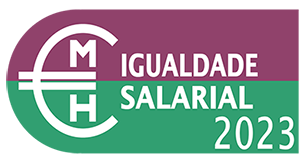The use of plastics contributed to a considerable improvement of human lives. It allowed the use of more cost effective, lightweight products, as well as the production of materials with characteristics required for a wide range of needs. Plastics allowed, for example, a reduction of food wastage, food borne bacterial infections and medical protection. However, the increased production of plastic materials led to an accumulation of plastic waste in the environment, where it is often subject to a variety of abiotic and biotic processes that lead to their degradation/fragmentation into microplastics (MP) and nanoplastics (NP).
Despite the general recognition that small plastic particles can be found in different environmental compartments, the current understanding of its consequences remains scarce, particularly in terms of the effects of NP to aquatic organisms and to humans. NP have unique properties due to their size, shape, and capacity to interact with other substances (due to their large surface area). The chemical composition of synthetic plastics makes them a conveyor for non-polar anthropogenic pollutants posing an additional risk factor for which very little is known. For example, plastic particles can accumulate and be translocated into the circulatory system of aquatic organisms with evidence of oxidative stress and inflammatory response as well as impact on neurotransmission in organisms like mussels and fish. The potential of NP to interact with many proteins (e.g., important for fat metabolism, immune defence, and blood coagulation), and induce behaviour alterations raises concern on its social-ecological consequences. The growing concern over plastic pollution led to the search of alternative materials such as plastics of biological origin. Despite the reported biodegradable nature of these proposed alternative materials, when disposed of in an uncontrolled fashion, they will accumulate in the environment and fragment into MP and NP, as evidenced by polyhydroxybutyrate- NP release, shown harmful to microalgae, as a result of the abiotic degradation of polyhydroxybutyrate MP, under environmentally representative conditions. There is strong evidence that animal exposure to stressors during developmental stages results in permanent changes in stress coping. While individual stress coping/animal personality has an important ecological and evolutionary role, the underlying factors shaping and maintaining personality variation are poorly understood, with no studies on NP’s effects. Overall, this interdisciplinary project will test the hypothesis that NP exposure affects molecular, physiological and behavioural traits relevant for fitness and survival, and influence the toxicity of other contaminants. This project aims to: evaluate the risk posed by NP (of synthetic and biological origin) to fish (using Danio rerio as biological model), under environmentally relevant conditions, and how they may affect different metabolic pathways and stress coping styles; to compare the effects of “classic” (synthetic) and biopolymers NPs, to clarify if biodegradable polymers are safer than “conventional” polymers; to understand the current perception of consumers and industry about the plastic use and pollution problem; to translate the generated biological and sociological data into intervention and education activities aimed at transmitting knowledge on the problem, increase public awareness and decrease the release of plastics to the environment. Here we take a novel approach (involving biology, chemistry, social psychology) with strong relevance for areas like conservation, aquaculture, and human health, given the homology between the biological model tested (zebrafish) and humans. It aligns with UN sustainable development goals and EU strategy to rethink how plastics are designed and utilized throughout the value chain to improve sustainability.










